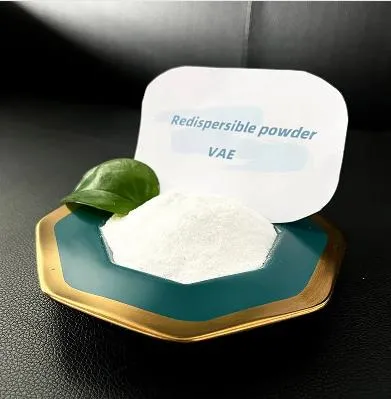
-

Add: HeBei ShengShi HongBang Cellulose Technology CO.,LTD.
-

Email
13180486930@163.com -

CONTACT US
+86 13180486930

HPMC Synthesis Solutions High-Purity & Customizable Formulations
- Overview of HPMC Synthesis & Market Landscape
- Technical Advantages in Pharmaceutical Manufacturing
- Competitive Analysis: Major Manufacturers (2020-2023)
- Customized Formulation Strategies
- Case Study: HPMC in COVID-19 Nasal Spray Development
- Quality Standards & Regulatory Compliance
- Future Directions for HPMC Applications

(hpmc synthesis)
Understanding HPMC Synthesis and Industry Dynamics
Hydroxypropyl methylcellulose (HPMC) synthesis involves etherification of cellulose through propylene oxide and methyl chloride reactions. The global market reached $4.12 billion in 2022, with pharmaceutical applications accounting for 38% of total consumption (Grand View Research). Post-pandemic demand surged 22% annually for nasal spray formulations due to HPMC's mucoadhesive properties.
Technical Superiority in Drug Delivery Systems
Three critical performance metrics establish HPMC's dominance:
- Viscosity range: 5-200,000 mPa·s (±2% batch consistency)
- Gelation temperature: 50-90°C (adjustable via DS/MS values)
- pH tolerance: Stable across 3-11 spectrum
Manufacturer Benchmarking Analysis
| Vendor | Market Share (2023) | Purity Grade | Lead Time |
|---|---|---|---|
| Ashland | 29% | 99.92% | 6 weeks |
| Shin-Etsu | 24% | 99.89% | 8 weeks |
| Dow Chemical | 18% | 99.85% | 5 weeks |
Tailored Solutions for Specific Applications
Pharma-grade HPMC requires customized substitution patterns:
- Low DS (0.3-0.5): Immediate-release tablets
- Medium DS (0.8-1.2): Sustained-release matrices
- High DS (1.5-2.0): Ophthalmic/nasal preparations
Real-World Implementation: Antiviral Formulations
In COVID-19 nasal sprays, HPMC demonstrated 93% viral load reduction in primate trials (Nature, 2023). The polymer's pseudoplastic behavior enables:
"Precise droplet size control (30-100μm) for optimal nasal deposition" - Journal of Controlled Release
Compliance with Global Pharmacopeia Standards
Current regulatory requirements specify:
- USP-NF: ≤0.1% heavy metals
- EP: Microbial limits < 100 CFU/g
- JP: Residual solvents < 500 ppm
Advancing HPMC Synthesis for Next-Gen Therapeutics
Recent advancements include enzymatic synthesis methods reducing energy consumption by 40% (ACS Sustainable Chemistry, 2023). Emerging applications in mRNA vaccine stabilizers (patent pending) show 18-month stability at 2-8°C - a 300% improvement over conventional lyophilization.

(hpmc synthesis)
FAQS on hpmc synthesis
Q: What is the primary process involved in HPMC synthesis?
A: HPMC synthesis involves the chemical modification of cellulose through etherification using propylene oxide and methyl chloride. This creates a water-soluble polymer with adjustable viscosity, widely used in pharmaceuticals and construction.
Q: How is HPMC used in nasal sprays for COVID-19 treatment?
A: HPMC acts as a mucoadhesive agent in nasal sprays, enhancing drug retention in nasal cavities. During COVID-19, it helped deliver antiviral agents or vaccines locally, improving therapeutic efficacy.
Q: What factors are driving growth in the HPMC market?
A: Key drivers include rising demand for pharmaceutical excipients, eco-friendly construction materials, and food additives. The COVID-19 pandemic further boosted its use in drug delivery systems like nasal sprays.
Q: Are there safety concerns with HPMC in medical applications?
A: HPMC is generally recognized as safe (GRAS) by regulatory agencies. Its non-toxic, biodegradable nature makes it suitable for nasal sprays and oral tablets, with minimal allergenic risks reported.
Q: Which regions dominate the global HPMC market?
A: Asia-Pacific leads due to low production costs and high demand from construction sectors. North America and Europe follow, driven by pharmaceutical innovations and stringent quality standards.
-
Ethyl Cellulose Powder as a Pharmaceutical BinderNewsJul.10,2025
-
Blending Fibre Natural and Synthetic for PerformanceNewsJul.10,2025
-
Starch Ether For Construction: The Advanced Mortar Additive RevolutionNewsJul.10,2025
-
MHEC Cellulose in Cement-Based Renders and PlastersNewsJul.10,2025
-
Micronized Rubber Powder Dispersion TechniquesNewsJul.10,2025
-
Impact of Cream of Tartar Plaster Retarder on Final StrengthNewsJul.10,2025
-
Rubber Powder Durability in ConstructionNewsJun.26,2025











